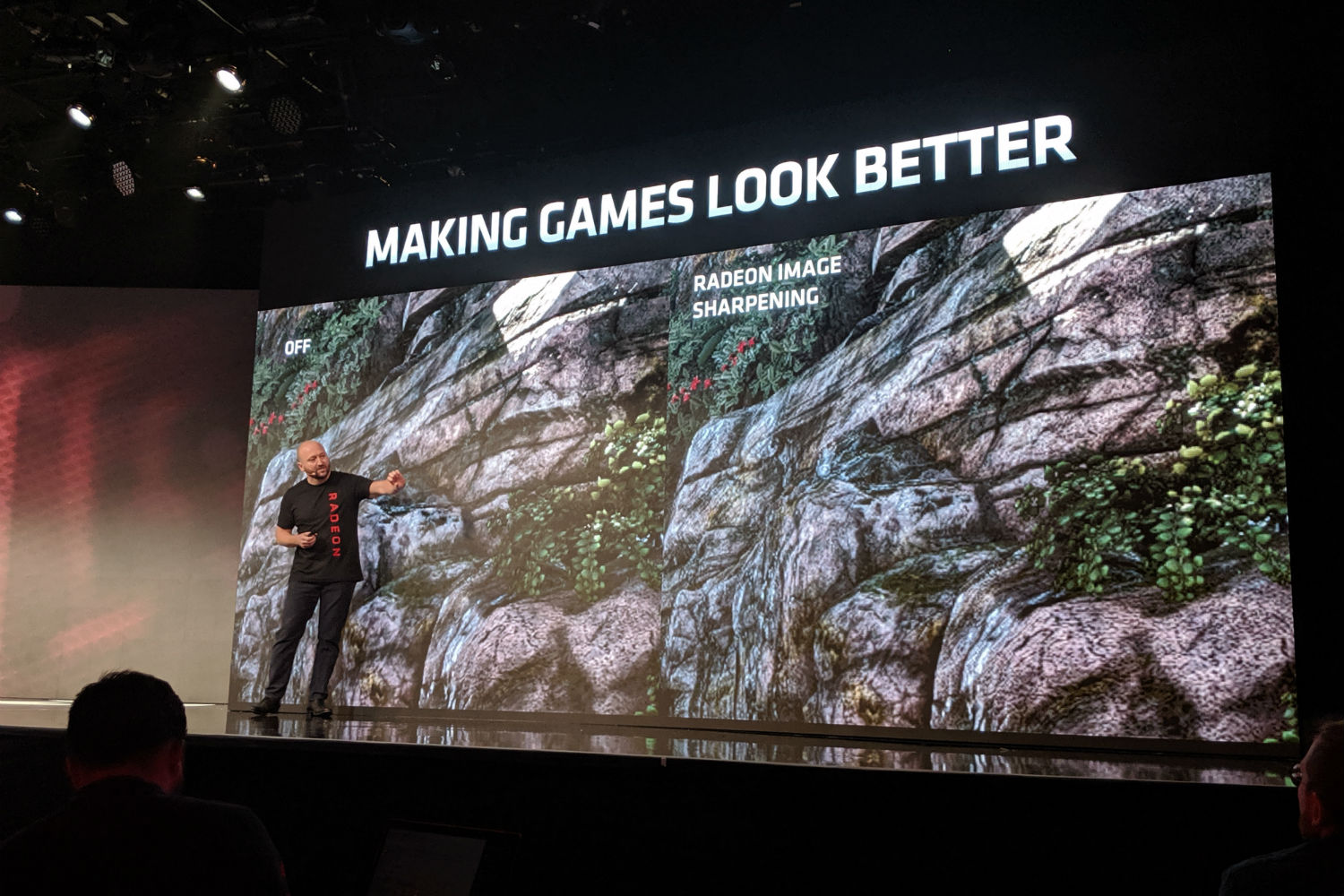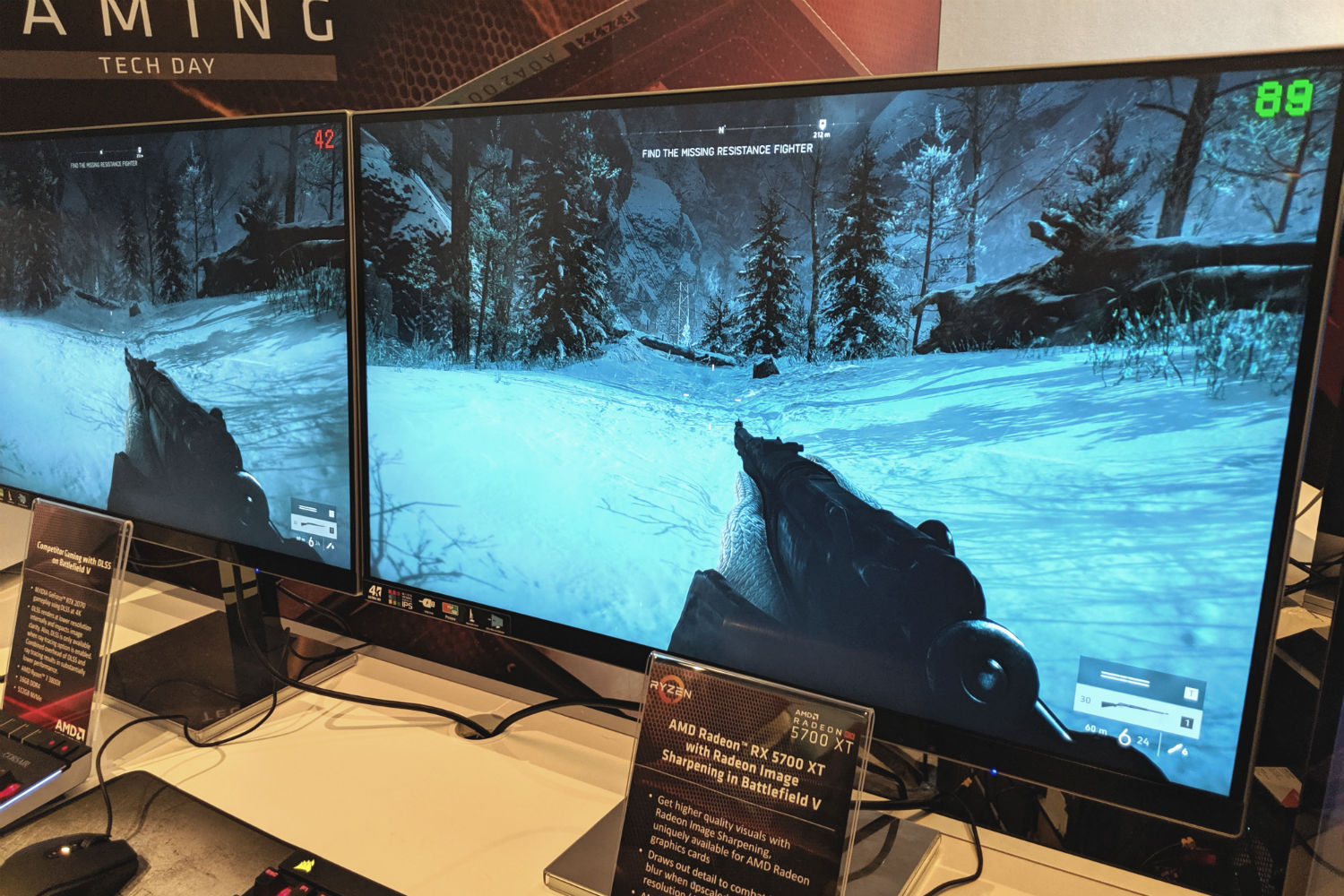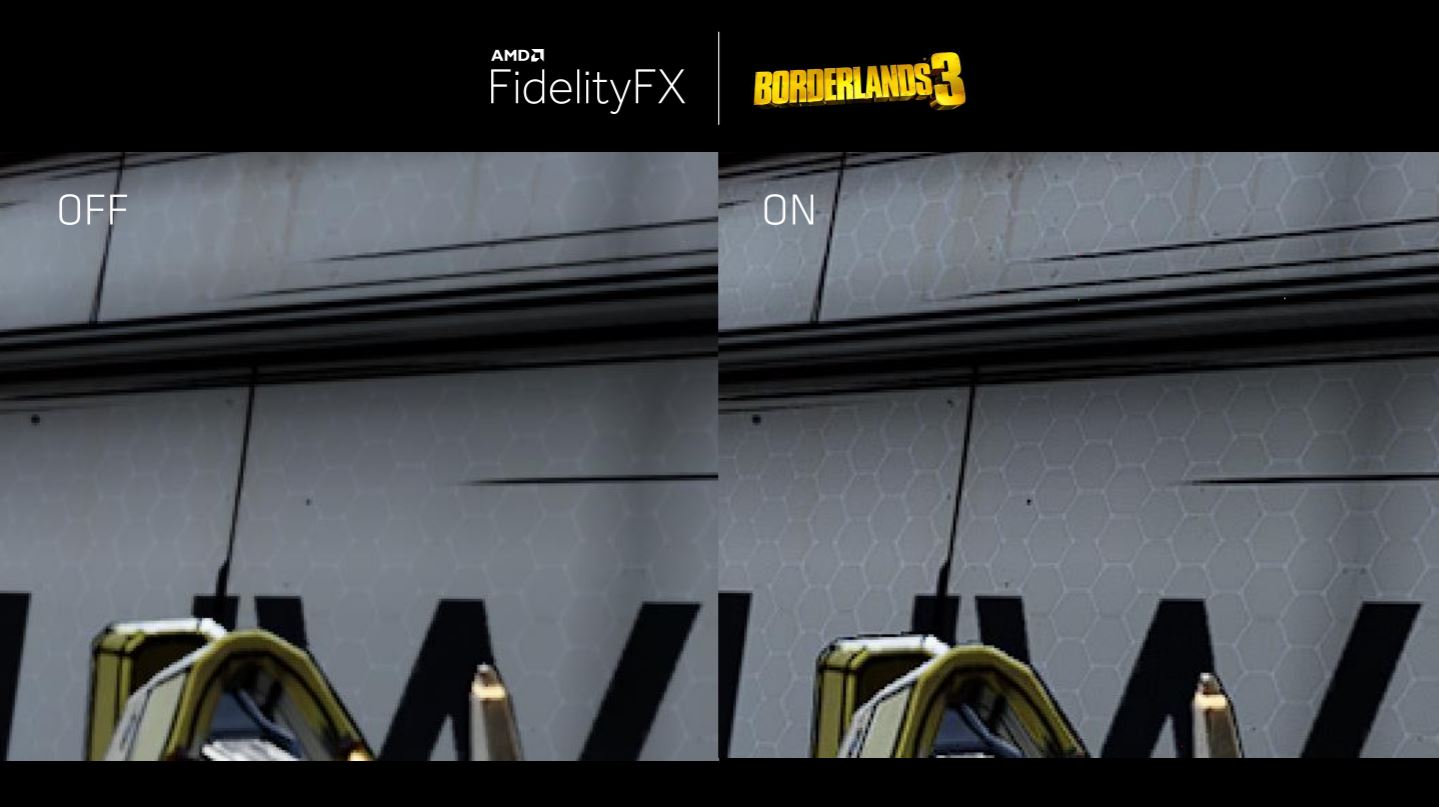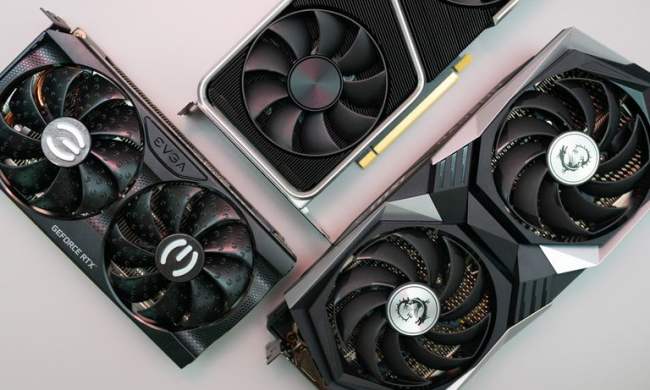
In a press event leading up to AMD’s E3 livestream, the company clarified that it was not yet ready to move forward with hardware accelerated ray tracing in its new graphics cards. It did, however, announce some new tricks in the world of upscaling and post-processing to compete with Nvidia’s DLSS (Deep Learning Super Sampling).
Known as Radeon Image Sharpening, AMD’s solution is an intelligent sharpening technology that provides a lift in the visual quality of a game without a dip in performance. The effect takes a look at the high contrast parts of any given scene in a game and artificially draws out more detail. AMD says this sharpening of textures makes 1080p look close to 1440p when upscaled on a higher resolution monitor.
AMD showed a screenshot from a game and highlighted how Radeon Image Sharpening pulled out crisper details in the shadowy rocks from the darker aspects of an image without interrupting any anti-aliasing softening happening near the light source.
Unlike DLSS, which must be implemented on a game-by-game basis, Radeon Image Sharpening is a simple switch. According to AMD, it just works.

Nvidia never pitched DLSS as a solution for upscaling. Instead, it was meant as a performance enhancement for Nvidia’s RTX ray tracing. However, in our testing, DLSS resulted in blurry image quality at high resolutions to compensate for that performance. AMD had both solutions running Battlefield V side-by-side — the Nvidia system at 4K with ray tracing and DLSS on, and the AMD system with Radeon Image Sharpening in 1440p. The result was very similar, with the AMD system looking close to 4K thanks to the added sharpness of RIS. And, because it was still technically playing at 1440p, Battlefield V hit framerates upward of 90 FPS.
As of now, however, RIS is only available on AMD’s new Radeon RX 5700-series graphics cards, and doesn’t yet include support for DX11. AMD says it’s only a matter of resources, but Radeon Image Sharpening is currently only available for DX9, DX12, and Vulkan.
FidelityFX and ray tracing
AMD has taken its DLSS solution even further. It also announced FidelityFX, a open-source developer toolkit that could have an even wider impact on future games. The most significant tool in the kit is CAS (Contrast Adaptive Sharpening), which is based on a similar set of technology as Radeon Image Sharpening.

Unlike Radeon Image Sharpening, Contrast Adaptive Sharpening must be implemented individually by games, but it’s all completely open source and free for developers to use through AMD’s GPUopen.com. It’ll even work on Nvidia cards, according to AMD.
The features in FidelityFX give developers more control over in-game visuals, tweaking sharpness for ultimate results. It’s even possible to give players manual control for custom results. Radeon Image Sharpening, by contrast, is an on/off switch that can’t be customized.
Ray tracing is coming. Eventually.
While AMD supports the software-enabled ray tracing that’s been available for years now, AMD insists game developers are wary about committing to ray tracing. Instead, AMD says developers are asking for features like CAS, which allows for mass adoption. AMD claims that unlike DLSS and ray tracing, AMD’s features are led by what developers ask for, not what they want to push on developers.

AMD reaffirmed that ray tracing would eventually need to include hardware acceleration, but gave no clear indication when that would appear in future cards. AMD also mentioned that the eventual solution would move to “full scene ray tracing leveraging cloud computing,” though it didn’t elaborate more on how that would happen.
Adoption of both DLSS and ray tracing has been disappointing, as few developers have been willing to integrate Nvidia’s features. The few games that have used it, have implemented in very limited scenarios, leaving the effect on the overall image quality underwhelming.
AMD’s continuing hesitant public stance ray tracing is interesting given what we know about the next generation of game consoles. Both Xbox Scarlett and the PlayStation 5 will support ray tracing, and both will use AMD’s RDNA graphics architecture. That makes it clear that ray tracing is planned — it may not arrive in AMD hardware until late 2020.



